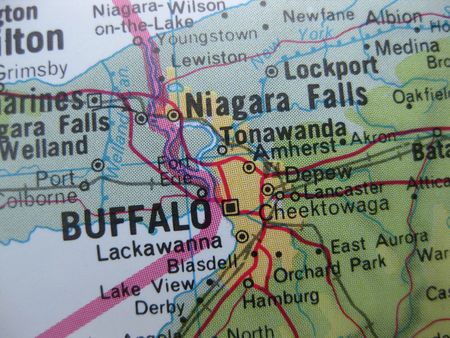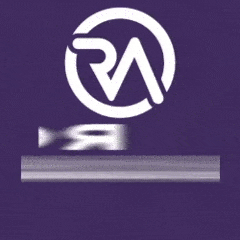Business Lending
Marketplace Lender P2Bi Raises $7.7 Million In Venture Funding
November 18, 2016
Denver-based crowdfunding marketplace lender, P2Binvestor has raised $7.7 million in Series A1 funding led by a Colorado-based angel investor network, Rockies Venture Club and a Japanese venture firm Future Venture Capital Co, its first investment outside Japan.
The P2Bi platform currently has 150 investors – both institutional and retail and it plans to fund 112 new borrowers, up from the current 80 borrowers, by Q1 next year. The proceeds will be used to boost sales and marketing efforts and grow the company’s operations towards this target.
Founded in 2012, P2Bi provides revolving lines of credit of up to $10 million to businesses. With an average line of $1 million, the company’s customers include businesses in retail, manufacturing and consumer goods packaging. It has originated $350 million since 2014 and it is on track to hit $8.2 million in revenues this year.
“We’re seeing more interest in our model as venture funding hits a two-year low and more entrepreneurs are looking for ways to grow their business while preserving their equity using good-quality, flexible debt,” said CEO Krista Morgan in a press statement.
P2Bi has been bullish about fundraising and diversifying its capital sources. Less than two months ago (September 20), it closed a $10 million credit facility with Pittsburgh-based mortgage service company Urban Settlement Solutions and in April this year, through a partnership with New York-based hedge fund, MW Eaglewood Americas, the company raised $50 million in debt.
Brief: LiftForward Secures Up to $100 Million Credit Facility from Monroe Capital
November 17, 2016Chicago-based investment firm Monroe Capital arranged a credit facility of up to $100 million for New York City-based small business lender LiftForward.
LiftForward provides small business loans up to $1 million using automated underwriting. The company also sells “hardware-as-a-service” like Microsoft Surface to manufacturers, distributors and retailers, and supports the financing of these transactions.
Monroe Capital makes debt and equity investments in middle-market companies in healthcare, technology, media, specialty finance across the U.S. and Canada.
This Startup Wants to Bring Realtime Payments to Medical Claims
November 14, 2016New York City-based fintech startup Liquid FSI unveiled its first product, Convert2Pay, a platform for claiming medical bills.
Liquid FSI was founded in 2014 and after two years of development and testing, the company launched its first white label solution, Convert2Pay, a platform where healthcare professionals can verify and claim medical invoices and get paid in real time.
Founder and CEO Frank Capozza wants to tend to the alternative finance opportunity in healthcare. “The SMB financing industry is reaching maturity with high cost of customer acquisition, declining renewal rates, ISO channel conflict, and stiff competition from new market entries like PayPal, Square, and American Express,” Capozza said.
“Since our strategy is to integrate our ‘View, Verify, Convert’ technology into the healthcare practice and lab management ecosystem, it’s a win-win for lenders and borrowers,” Capozza said in a statement. The Company will offer the product as a ‘white label’ solution to an alternative lending company.
As OnDeck’s Stock Hits Record Low, Is There a Renewed Confidence in the Broker Channel?
November 6, 2016 OnDeck traded below $4 on Friday, a new all-time low that came in the wake of the company’s earnings announcement just the day before. Apparently, the company’s record-breaking $613 million in quarterly originations was not the assurance that investors were looking for.
OnDeck traded below $4 on Friday, a new all-time low that came in the wake of the company’s earnings announcement just the day before. Apparently, the company’s record-breaking $613 million in quarterly originations was not the assurance that investors were looking for.
Their report showed that more of the company’s loans are staying on their balance sheet and notably, there’s been an increase in the percentage of loans sourced from brokers. 27% of the dollars originated in Q3 came from brokers versus only 24.5% during the same period last year. Meanwhile, the raw number of loans originated by brokers is up from 18.6% to 20.2% in Q3 year-over-year. These are still substantially lower than previous years. For instance, brokers originated 41.4% of dollars in 2014, 56.54% in 2013 and 75.1% in 2012.
OnDeck refers to brokers as “funding advisors” in their reports, with company CEO Noah Breslow noting that this channel has grown 40% year-over-year, almost twice as fast as their direct and strategic channels. Analysts took note and Brian Fitzgerald from Jefferies asked why this was occurring on the morning call. Breslow responded by saying that it wasn’t due to any intentional reallocation of resources among the channels.
“So at any given quarter you may see a push/pull on the relative growth rates of the channel but I would say that we’re not sort of allocating resources or dollars between channels and the channels really are competing for resources internally. So I think the dynamic in funding advisors frankly, is a positive. We took that channel down last year, we did a pretty aggressive recertification. So we’re working with a lot fewer partners than we did a while back and on the flip side, those partners are higher quality and we’re seeing better originations now from them; and we’ve really optimized our conversion rates with a number of those partners. So we feel we feel pretty good about that.”
Also discussed on the call was OnDeck’s partnership with Barbara Corcoran, in which it was said that the company is sending out direct mail using her name and likeness to promote the company. Her TV commercials have already been making the rounds.
And just as signing on Shark Tank stars as partners probably doesn’t come cheap, Breslow suggested that the industry competition had really been narrowed down to the players who had already made hundreds of millions of dollars in loans.
“I think it’s fair to say that the very early stage start-ups or the subscale players are increasingly having a little bit more trouble competing, so we are seeing the preponderance of some of the marketing activity coming from folks who are a little bit larger in scale. And my sense is that continues and that’s going to consistent with the overall trends that people have seen. So the folks who are buying marketing at this point are folks who have loaned hundreds of millions of dollars as opposed to tens of millions of dollars, and I think the VC environment for these types of companies remains pretty challenging.”
OnDeck Earnings: Originations Grow 27%, Continue to Predominantly Use Own Balance Sheet
November 3, 2016OnDeck recorded a GAAP net loss of $16.6 million for the quarter ending in September, down from a $3.7 million profit during the same period last year. The firm’s net revenue also plummeted 30 percent to $32.3 million, even though gross revenue was up 15 percent to $77.4 million. The shift is largely a consequence of moving away from gain-on-sale marketplace revenue to interest income. Only 16.6% of term loan originations in the third quarter were sold or designated as held-for-sale through their marketplace.
The company originated more loans this quarter compared to a year ago, with origination volumes rising 27 percent to a record of $613 million. Loans under management also increased 44 percent annually to $1.1 billion.
OnDeck grew its direct and strategic channels by 23 percent year-over-year. Its funding advisor channel grew 40 percent during the same period.
“During the quarter, we continued to diversify and expand our funding capacity, and we are actively engaged in the process of bringing new funding sources online,” said CFO Howard Katzenberg in a statement. “We remain confident in our unique model and track record of performance, which we believe positions us well for further growth, improved operating results and continued access to the capital markets.”
The company also recently lost one of its sales frontmen, senior vice president Zhengyuan Lu who joined Chicago-based alternative finance-focused investment firm, Victory Park Capital.
At Money 20/20 recently, OnDeck chief Noah Breslow said that the company will remain focused on small businesses as the customer and there are no plans to venture into mortgages or student loans like several of their counterparts in consumer lending.
Talking about the partnership with JPMorgan, Breslow said that the deal was still in the “initial rollout” phase, despite being announced almost a year ago.
Square Beats Revenue Estimates with $439 Million; Lending Business Grows 70%
November 2, 2016Square Inc’s stock jumped 7 percent on Wednesday, thanks to upbeat earnings reported Tuesday.
The Jack Dorsey-led company recorded a loss of $32 million for the third quarter, compared to $52 million in the comparable period last year, and beat analysts’ revenue estimates of $430 million, with a 32 percent jump in revenue totaling $439 million.
Square processed $13.2 billion worth of transactions through its point of sale devices, up 39 percent since last year and the company’s lending business, Square Capital grew 70 percent annually, extending $208 million through 35,000 loans. With this, it has originated over $1 billion in two years.
Square Capital loans are made by Celtic Bank and loan offers are presented using the Total Cost of Capital method, where cost is disclosed as a precise dollar amount so that potential borrowers will know exactly how much they will have to pay. By enforcing a fixed 18 month term, Square differentiates its loan product from a merchant cash advance or a purchase of future sales.
Square CFO Sarah Friar told CNBC that there is still a lot of room for growth in the Square ecosystem with existing merchants, even as the company extends credit to businesses that do not use Square for payments. Friar also said that the company is “executing on all cylinders” to beat estimates for revenue and growth.
A GIANT BUFFALO ‘BILL’: Fake Debt Settlement Company Allegedly Defrauded Merchants, Business Lenders and MCA Companies Out of Lots of Cash
November 2, 2016
Several companies controlled by an alleged fraudster run out of western New York, promised merchants they could settle MCA agreements and alternative business loans for cheap.
Sergiy Bezrukov AKA John Butler AKA Thomas Paris AKA Christopher Riley was arrested last week after being charged with mail fraud. A joint investigation between the Department of Homeland Security, the IRS and the US Postal Inspection Service concluded that he scammed more than 100 victims and caused damages in excess of over $500,000.
“The victims and losses are the direct result of Bezrukov’s scheme involving the mailing of thousands of fraudulent solicitations to vulnerable small business owners, luring them into paying him for a service he never intended to provide, and resulting in hundreds of defaulted loans, worth hundreds of thousands of dollars,” an affidavit signed by Postal Inspector Clinton E. Homer states.

$400,000 in hidden cash was seized by investigators. The prosecution argued he was a great flight risk after it was discovered Bezrukov has dual Ukranian citizenship and that an identical copy of his US passport exists which he claims is missing and cannot forfeit. That combined with his propensity to use fake aliases resulted in his bail being denied and his being detained pending trial.
 Bezrukov is currently being charged with mail fraud.
Bezrukov is currently being charged with mail fraud.
Records, surveillance and witness interviews confirmed that he paid to have 75,000 mailings sent out to advertise his service just between the first week of August and the first week of October 2016. Those services allegedly included an offer to reduce a small business owner’s short term debt by as much as 75% in just 6 to 12 hours.
One small business owner said that after signing up, they were directed to send an initial $1,250 to Corporate Restructure, Inc. via wire transfer. It was suspicious bank activity like this that would ultimately play a role in the scheme unraveling.
“The Postal Inspection Service received a referral from a fraud investigator for Citizens Banks related to multiple accounts with suspicious activity,” Federal Agent Homer wrote in his affidavit.
Bezrukov is alleged to have used over 30 different company names, numerous banks, post office boxes, UPS Store boxes, and employees in an effort to ensure the success of his scheme, and in an effort to hide his true identity and location of operations. Most of the locations were in upstate New York, specifically in Salamanca, Jamestown, Irving, West Seneca, Cheektowaga, Buffalo and Sanborn.
Two other individuals were also charged in connection with the activity, Mark Farnham of Buffalo and Dustin Walker of Salamanca. Farnham is referred to as the Vice President of Bezrukov’s company, Corporate Restructure, Inc., while Walker was the Chief of Security. They are alleged to have committed bank fraud. More than $125,000 was deposited in their accounts just between June 21st and August 12th of this year.

Bezrukov himself was no stranger to alternative business finance. Numerous complaints online date back to his role in a company known as SBC Telecom Consulting, a purported business funding company that was also referenced in the affidavit attached to the criminal complaint against him.
Even in that business, Bezrukov who went by alias John Butler at the time, was known for being outrageous. Last year, shortly before he ventured into the alleged debt settlement scheme, his company filed a $45 million lawsuit against a former sales rep for among other similar claims, allegedly violating a non-compete agreement.
The Buffalo News reports that Bezrukov is being represented in his criminal case by Scott F. Riordan, who declined to comment on the allegations.
Funders Prep for the Holiday Rush
November 1, 2016
As the year draws to a close sending everyone into a dizzying holiday frenzy, funders are prepared to fire on all cylinders to fuel their retail customers with cash.
The last quarter is crunch time for funders alike, who start preparing months in advance — designing new products, marketing and selling them. deBanked spoke to a few to find out what business looks like at this time of the year and what’s in store for 2017.
For some, Christmas comes in August
At South Dakota-based Expansion Capital Group, the holiday prep started as early as August. “We think demand is going to be very strong and to accommodate for it, we started 60 days early,” said Marc Helman, director of strategic partnerships. The company launched four new products in August for a wide spectrum of borrowers — longer term products for existing customers and starter offers for new companies and those with challenged credit.
Since the demand peak is cyclical, most funders who have been around a while have the drill down to a science. For NYC-based funder Hunter Caroline, demand spikes up close to the tax extension period, in September and October. “We sit down with our marketing team, see which clients ramp up this time of the year and focus our sales efforts in that direction,” said Cody Roth, managing partner at Hunter Caroline. During the holiday season the company turns its attention to customers in mom and pop retail, restaurants, liquor stores and gift stores in small towns.
“We weigh a lot into seasonal businesses and have certain hybrid programs,” Roth said. “We collect a little bit more during the busy season and keep it down during the slow time.” For this year specifically, the two-year-old firm is pushing invoice factoring, purchase order financing and unsecured loan products apart from its usual business loan offering of up to $4 million for 24 months.
Plan, pilot, pivot
Q4 is also the time when companies plan and strategize for the year ahead. And for loan marketplace Bizfi, a lot of changes are in the offing. The company appointed John Donovan, a 30-year veteran in the payments and alternative finance industry as its new CEO. And while on track to approach nearly $600 million of fundings this year, Bizfi also decided to cut ties with some non-performing ISOs to increase efficiency. “We just told around a hundred sales offices we could not do business with them anymore to use resources for our own funding channels that have better conversion rates,” said Stephen Sheinbaum, founder and president of Bizfi.
Holiday Hangover
The holiday season is arguably one of the busiest times of the year for merchants, but it doesn’t have to be so for funders. Jason Reddish, CEO of New Jersey-based Total Merchant Resources advises all his clients to take the money when they don’t need it, asking clients to borrow early, put away the money and by November, have the capital pay for itself through the peak season. “The oldest problem with credit is that you get as much as you want when you don’t need it,” Reddish remarked. “You have access to cheap and the most flexible money when you don’t need it.”
The company tries to structure deals that way for some of its retail clients who see high holiday demand.“We see a pretty big spike going into the holidays and then there is a holiday hangover where they are absorbing all the money they borrowed,” Reddish remarked. “Until the hangover wears off in February and we get busy again.”
All things considered, funders are on their marks for the holiday. Will it be bright for them?






























